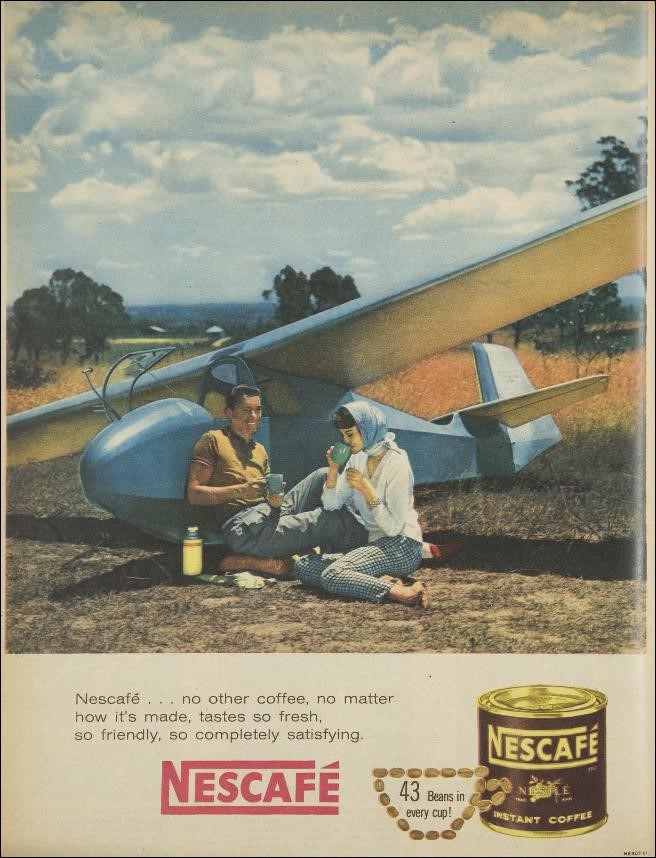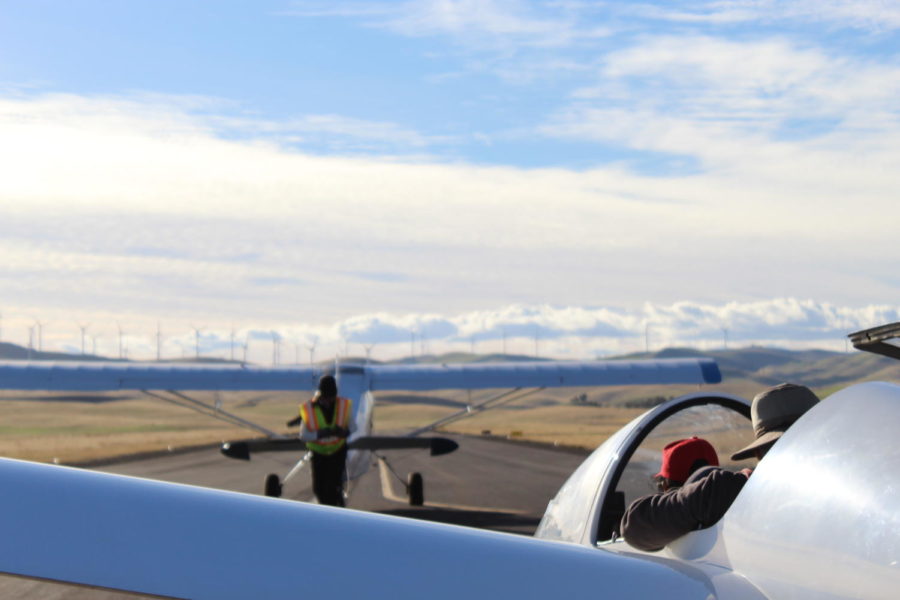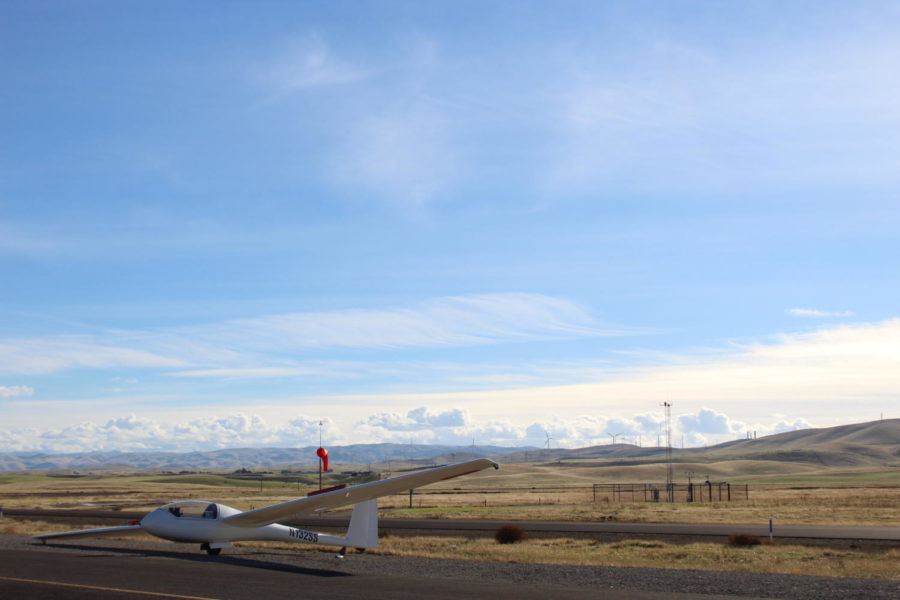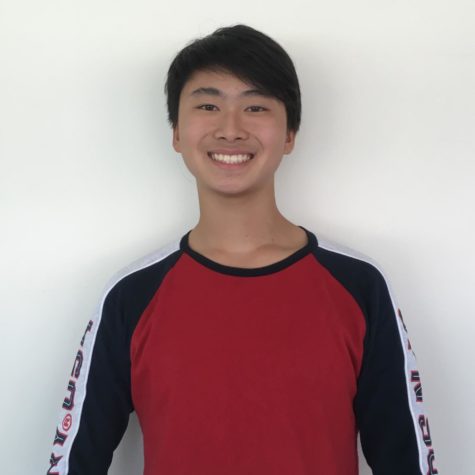One remarkable December day, on the mostly unremarkable year of 1946, two employees of the Ames Aeronautical Laboratory, Earl Menefee and Ralph Salisbury, founded a soaring club at the then-existing Warm Springs Airport, near Milpitas.
This tiny club would soon become the Northern California Soaring Association (NCSA). It would go on to foster and develop a rich and continuing tradition of passion and community.
However, their mission of spreading the passion for aviation is now being challenged by a formidable trend: the ever-declining interest for flying in America.
“We care that the sport is declining because once you’ve done it — had a true soaring experience — it is almost impossible to fathom that others would not want to do it, too. The beauty, the spectacle, the awe-inspiring wonder of it is a feeling that must be shared, must be!” said Van Emden Henson, sitting president of NCSA.
Soaring, or gliding, is a sport closely tied with recreational general aviation. It involves an unpowered aircraft, called a glider or sailplane, being connected to a towline and towed up into the air, commonly by a powered tow plane aircraft. Once disconnected from the towline and tow plane, pilots observe and utilize air and atmospheric patterns to stay up and flying in the skies as long as possible, and to travel great distances.
“Why [would someone] seal themselves up for five, six, ten hours at a stretch in a little tube? To catch the joy and beauty of soaring above the spectacular Sierra Mountains with a bald eagle thermalling with you ten feet off your wing. To note the beauty of near silent gliding with Yosemite or King’s Canyon, or Lake Tahoe below your wings,” Henson said.
Henson added that it might take several tries to find a perfect gliding day, but once such a day does come about, the feeling is incredible.
“After a long day, you look off into the distance and see your home airfield, 50 or 60 miles away and start your final glide, knowing you will make it with altitude to spare. It isn’t always that easy — in fact, days this perfect are relatively rare, but they happen often enough to drive you to come back, again and again, to find just such a day. It is incredibly joyful and fulfilling — and totally, totally addicting,” Henson said.
But for a sport known for soaring through the skies, the existence of gliding as a pastime and passion has been forced into a nosedive across the country.
Not just in America, but in the rest of the world, interest in the sport of soaring has been noticeably dropping in numbers. The preface of the European Gliding Union’s Proceedings from the 2nd EGU Workshop on Club Development sums it up aptly: “Participation levels in gliding were in almost universal decline. This was known to be a fact, indeed everyone had been aware of it for many years.”
The sport shows no signs of slowing its decline, rapidly diminishing in numbers and resources towards possibly even below its “critical mass necessary to sustain the sport in general,” as one pilot, Keith Miller, speculated in Soaring magazine.
However, one local Bay Area gliding club powers on, as it has for seven lengthy decades.
Roy Moeller, who joined the NCSA in the late 70s, described his long-lived club “like a family, really, everyone had a common interest and you would just go out and fly.”
To fully understand the situation, one should look at the early history of the NCSA.
Moeller, 72, is still an active member of the NCSA. He remembers when he first decided to join the organization at Hummingbird Haven in 1977, after taking lessons at the now-gone soaring operation, Skysailing, which was based in Fremont.
“After a while I said, ‘well, learning [to fly] is pretty expensive,’ and started looking around for a club to join, and so I went alphabetically down in the list of clubs in the ‘Soaring’ magazine, and first one, of course, is Ames, so I call them up, and lo and behold, that’s exactly what I wanted,” Moeller said.
Soon after the original organization’s formation, a new club was formed, alongside the Ames Soaring Club, named the NCSA, and the two moved from Warm Springs to a small airfield named Centerfield, in Centerville, now modern-day Fremont. Ted Nelson, a glider pilot and aircraft engineer, later invited the clubs to his own private field in Livermore.
The two groups, who were affiliated but operating separately at the time, moved to the Hummingbird Haven field, named after the wooden motorglider “Hummingbird,” which was designed and built by Nelson and Harry Perl, who soon became NCSA members. NCSA and the Ames Soaring Club later merged and moved to its modern-day site at Byron Airport in the late 80s.
The club operated very similarly to the current NCSA, now based in Byron Airport in Contra Costa County, meeting Saturdays, Sundays, and sometimes weekdays for instruction and private flying.
Moeller recalled some adventures from his time during the Hummingbird Haven days.
According to Moeller, club member Les Sebald took someone out one day in a club glider, had a tow rope break soon after taking off, and was forced to attempt an emergency landing back onto the runway. Except, he never made it back.
“[Sebald] got low, and he tried to come back, and he ended up landing in the power lines at the west end of the runway. It was impressive.” Moeller said, “We saw him, we said, ‘God, he’s getting awful low, is he gonna clear the wires?’ The air was still, there was a deep buzz, ‘BZZZZZT,’ a green flash, and the plane ended up hung up in the wires, just dangling a few inches off the ground. And so they jumped out. Fortunately, they didn’t get electrocuted.”
Unlike the present site of NCSA, the Livermore site had been devoid of wind turbines and other obstacles and was a perfect theater for close ridge soaring, in which pilots sailed on rising wind deflected by natural slopes and features like ridges.
“One of the older guys used to ridge soar from [Mt.] Diablo all the way back to the club. It was very different, you wouldn’t get very high. Most of us weren’t that brave,” said Moeller, laughing.
Sadly, the change in geography was only a minor difference to observe between the past and present NCSAs, paling in comparison to a dramatic development over the decades experienced by and affecting not only the local club, but pilots in America, and in the world: the fall of the sport.
The 70–80s were a true “golden age” of general aviation, especially for gliding, Moeller noted. For the first time, manufactured sailplanes were becoming readily available to purchase, as advances in technology and performance were made increasingly rapidly.

A painted Nescafe advertisement in a dated issue of an Australian magazine, featuring a man and a woman relaxing after a glider land out.
“It was a pretty productive era as far as soaring. There used to be very large, very popular contests held for the sport, [now] it’s become more of a niche activity,” Moeller said.
This loss of popularity is transparently reflected in the change in attitude in the club between these few decades.
Moeller said, “It [was] much more congenial than the current club. The current club, people come and go, most of the people that we see out there are new students, but once they get their license, some of them don’t stick around, some of them do.”
So why the recession for soaring? Moeller has a few thoughts.
With today’s crowded airspace and regulatory procedures, amongst other complications pilots now face, gliding simply has become more restrictive in activity for potential enthusiasts.
“Nowadays, the planes are fairly expensive, pretty much out of the reach of people that are just starting out, you basically have to deal with secondhand gliders. The technology’s matured now,” Moeller said.
His concern with the situation at NCSA specifically lies with the smaller and smaller proportion of people truly devoted to the sport, out of the total collective of those involved, like those who simply just receive instruction and certificates.
“If a large proportion of the people that go through instruction and get their license stuck to the club, we’d have a huge membership,” Moeller said.
In general, he believes people “have less time to devote to one hobby, they seem to be more interested in taking on new experiences, a multitude of experiences.”
These “impressions,” as Moeller calls them, are not just wholly of feeling and opinion though.
Just between 2004 and 2017, the number of active pilots holding glider ratings fell from 30,222 to 24,276, according to the FAA’s U.S. Civil Airmen Statistics. That’s a total loss of 5,946 glider pilots and a total decline of 19.7 percent for the 14-year period.
The trend is similarly mirrored in the same reports, through the number of new gliding certificates issued. Between 2003 and 2017, freshly issued certificates to license glider pilots dropped in number from 359 certificates to a meager 154, a whopping 57 percent decline of new students that choose to enter the sport.
According to Miller, writing for Soaring magazine, the official journal of the Soaring Society of America and the only national organization for glider pilots in America peaked in membership in 1980 with 16,000 members; a bleak contrast with the sharp drop to 10,000 members in 2016.
Again in Soaring magazine, John H. Cochrane of the SSA Contest Committee writes of the steady decline in U.S. National contest participation, with many classes even approaching the minimum requirement of pilots participating to validate the contests.
Indeed, the numbers are adding up. Soaring, as a sport, hobby, and pastime in America, may very well be beginning to die out.
Henson shared similar sentiments with Roy Moeller.
“[The decline] is probably true of all of the clubs. We’re all fighting the same forces here that are having our cause in the sport to fade in popularity,” Henson said.
Learning to glide at 56, the club has become very meaningful to him in recent chapters of his life.
“The soaring community, because it’s small as it is, tends to be a pretty tight-knit, close group of people… the club is special because I’ve made some really nice friendships, and they’re friendships that last,” Henson said.
He had wanted to fly all his life leading up to joining the club, but it had never occurred to him to try the sport. In fact, prior to then, he was confused as to why people would even participate in soaring. This underlines a challenge for clubs to attract newcomers, as he explains: the need to convey the understanding of the sport to others.
“They think of it as ‘oh you guys couldn’t afford to buy an engine for your aircraft?’ and stuff like that, or ‘what’s the fun of going up and just gliding down?’” Henson said. “We’ve gotta convey to them the idea that you can get into a glider and stay up for hours on end, and cover great distances if you want to and if you know how to play the conditions appropriately.”
The sport’s popularity has also faded in modern times with the rise of a variety of innumerable other activities and hobbies for people to be interested in. Newer recreational pursuits that don’t require as much commitment in investing time and money compete with gliding in attracting participants. And nowadays, other new opportunities in aviation, like drone-flying, are opening up and appealing to those interested in the field, directing those potential pilots away.
“There was a time when soaring might’ve been the only reasonable avenue for people into aviation,” Henson said.
A more materialistic obstacle for the local club is the thin mass of resources supporting instruction efforts. One or two instructors alternating out of a pool of eight and a single Bellanca Scout tow plane are the lone assets available to instruction operations every Saturday and Sunday. Club policies and legal restrictions forbid easy profit-making like selling glider rides, so financial resources for maintaining the fleet and club are constrained, too.
Although being a non-commercial club also means huge benefits for its members, with dirt-cheap membership fees, tow rates, and aircraft usage rates, NCSA has become “by far the cheapest game in town in terms of a soaring club,” Henson said.
Despite these challenges, Henson is proud of the club’s endeavors to offer basic, primary flight instruction for all of its students.
“We actually do put out a goodly number of newly licensed glider pilots each year. NCSA over the years has emphasized basic training, [getting] people to their license, and for a number of years we seemed to put out pretty much as many or more finished pilots per year as just about anybody else around, in this part of the world,” Henson said.
Great leaps are also made to encourage the youth and younger peoples to enter the sport, to counter an age demographic “phenomenon” in gliding, as the president of NCSA described it.
Soaring clubs around the world are commonly packed with pilots who enter the sport relatively late in life, people nearing or who have already reached retirement, now with an excess of free time and disposable funds. Many younger pilots who do join eventually begin to disappear as the years go on and they “have to worry about a career, they get married, they start having children, and all of those things serve to typically prevent someone from being real active in a sport like soaring, life happens,” said Henson.
Consequently, he describes most clubs, especially NCSA, to be full of a “few youngsters and a lot of oldsters.”
Emphasizing the need to introduce the younger demographics, Henson explains, what the club “is trying to do is develop a love of the sport in people who are young enough that they might decide to make life choices around the sport.”
The soaring club boasts an impressively extensive youth scholarship program. The Dave Cunningham Youth Scholarship covers virtually all expenses for applying high school and college students learning at NCSA.
The quintessence of the success of the club’s efforts and strides towards encouraging youth membership, and thus combating the crisis of the decline in soaring, John Pericich, 23 and now a flight instructor and tow plane pilot at the club, began training under the Cunningham scholarship program at age 13, concurrently gaining certified private pilot status and finishing his flight instruction with finishing high school. He has actively been with the club since then, having graduated from college only two years ago.
“In many ways, I grew up in it,” Pericich said. “A lot of things change in your life in that time, but NCSA was the constant in my life for this entire time period.”
Pericich has warm feelings for the sporting club he has stayed with for at least a decade. For him, and many others, NCSA has become a social club, offering “very interesting people to talk to and to spend time with. It’s not just the flying that’s made it interesting,” he said.
Of course, the sport of soaring isn’t just anything to him, either.
“It’s challenging, it’s fulfilling, and the views are nice. It has multiple characteristics of a good hobby,” Pericich said. “A lot of people say that while you’re flying, it’s very difficult to think about anything else that’s going on in your life, so it’s a good way to relieve stress.”
Out on the field, people of all different backgrounds in life, of tens of different nationalities gather to share their same passion. But the club, with about 80 members strong, is also a team. And the team players work hard to preserve the club and the sport.
On their assigned dates, the club’s eight tow pilots and eight instructors devote their time all day, the former volunteering for no pay, and the latter collecting very little from its adult students. Members volunteer as Field Managers on operating days, spending morning to late afternoon at the airport seeing to it weekend club operations run smoothly. On scheduled “workdays,” as it’s called at NCSA, volunteers toil tirelessly all day, usually in the scorching sun, taking apart, maintaining, and cleaning the gliders.
“I think the fact that people do it consistently and for no pay indicates that they feel connected to the club, and they think the work is meaningful,” Pericich said.
In simpler, lighter terms, John Pericich described his lengthy time at the club so far as “a fun experience, and a good way to spend time.”
For many at the Northern California Soaring Association, the endeavors, the fight to resurrect the dimming fires of passion for soaring, to reinvigorate the flames before the sport wanes and wanes until extinguished and no more, will not near its end soon, and certainly, will not be conceded easily.
Entertaining the grim possibility soaring may entirely disappear from existence in a few generations, Roy Moeller remains hopeful.
“I don’t think so, I think it’s gonna be a slow decline, [gliding] is always gonna be there,” Moeller said.
Gliding Operations of Northern California and Neighboring Nevada Areas























